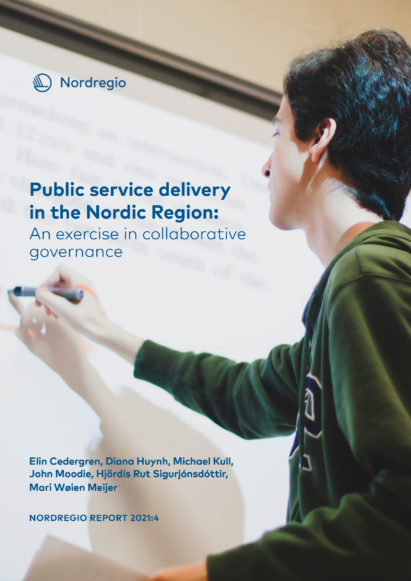Nordic welfare states are world renowned for providing high quality public services. Nordic municipal and regional authorities, in particular, play a central role in the delivery of key public services in areas, such as, health, education, and social care. However, in recent years, public authorities have faced several challenges which have reduced capacity and resources, including long periods of austerity following the 2008 financial crash, rapid demographic changes caused by an ageing population, and the COVID-19 health crisis.
In response to these challenges many public authorities have looked to inter-regional, inter-municipal and cross-border collaborations to improve the quality and effectiveness of public service delivery (OECD 2017; ESPON 2019). Indeed, collaborative public service delivery is becoming increasingly prominent in the Nordic Region due to a highly decentralized systems of governance (Nordregio 20015; Eythorsson 2018).
This report highlights six best practice examples of collaborative public service delivery from across the Nordic Region, with a main geographical focus on remote rural areas. Nordic policymakers and other stakeholders can learn from a wide variety of experiences, which can inspire others to engage in collaborative governance initiatives. The report highlights the main drivers, challenges, enablers, benefits and replication potentials of Nordic collaboration. Lessons are drawn from both local community initiatives, inter-municipal, inter-regional and cross-border collaborations. Thematically, case studies cover key areas of public service provision, including healthcare, welfare/social care, education and transport.
The report finds that Nordic collaboration between different levels of governance remains strong despite the disruptions caused by the current pandemic. New and innovative models of collaboration are constantly emerging thanks to technological developments that are helping to bring stakeholders together to solve common societal challenges. The high levels of cooperation outlined in this report indicate that collaborative governance is continually evolving within the Nordic context.









